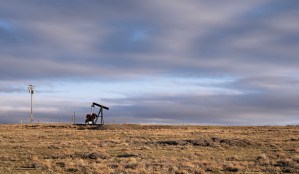

Wyoming’s revenue streams are slowly diversifying, delivering in part on longtime calls for the state to move away from its boom-and-bust ways. That changing picture, however, also involves a heavier reliance on oil and gas production and the state’s investments — all of which come with higher volatility than coal.
That’s according to a report from the Consensus Revenue Estimating Group that was presented to the Legislature’s Joint Appropriations Committee on Thursday.
Known as CREG, the group makes revenue projections each October to coincide with the governor’s budget preparations and then revises those numbers closer to the session to reflect the latest data.
Most major state revenue streams for fiscal year 2024 exceeded earlier estimates, including investment income and oil and gas production. Others, such as taxes and royalties from coal production and sales and use taxes fell short. Altogether, that leaves the governor and lawmakers with $173 million to consider in drafting a supplemental budget.
“Wyoming’s revenue structure is becoming more diversified. It just is,” CREG Co-Chair Don Richards told the committee.
“Other revenue sources are becoming more important,” Richards said. “Investments are becoming more important, sales and use taxes are becoming more important. That’s not to diminish the contributions of minerals in any way, shape or form, but just to show that the tax structure is slowly modifying.”
Asked by JAC Chairman Sen. Dave Kinskey (R-Sheridan) whether this meant a reduction in volatility — a kind of vulnerability financial forecasters have long warned lawmakers of — Richards responded, “Unfortunately not.”
“I’ve heard the phrase ‘King Coal.’ For this year, it really is ‘King Oil,’” Richards said.
There’s nothing more influential to the state’s revenue picture than oil, Richards said, which is what also makes it high risk.
“So if we miss this component by $5 [a barrel] we will be off by $26 million in the General Fund and Budget Reserve combined, and $23 million for the School Foundation Program,” Richards said.
The General Fund and the Budget Reserve Account are the primary accounts used for state programs and services, while the School Foundation Program is devoted to funding K-12 education.
The slightest shift in pricing due to volatility, Richards said, could amount to a hundreds-of-millions-of-dollars shortfall.
“We’re playing with a very high risk,” he said.
In contrast, coal is the more stable stream in Wyoming’s mineral sector, but yields are down. There’s a likely risk Wyoming will generate less than 200 million tons of coal in 2024.
“We have not been in that position in 30 years,” Richards said.
“Coal production has been adversely impacted by high stockpiles and low natural gas prices,” the report states. “Demand for thermal coal is also depressed with new electricity generation from renewable resources as well as new natural gas generation.”
The timing of coal’s decline remains highly uncertain, the CREG report states. Richards explained some of that conundrum to the committee.
“We get a lot of questions about, ‘Well, how do you come up with these reductions in coal?’” he said “And we use publicly available data. We look at the utility plants that use Wyoming coal. We look at the percentage of coal in those plants. We look at their announced closure dates. But their announced closure dates change. And more often than not, they get extended, meaning they extend their life rather than closing sooner.”
Nonetheless, Richards said, the report forecasts steeper, near-term coal declines than previous estimates.
Gov. Mark Gordon will use the report to shape his budget recommendations. He’s expected to present those to lawmakers later this year.
BEFORE YOU GO… If you learned something from this article, pay it forward and contribute to WyoFile. Our work is funded by readers like you who are committed to unbiased journalism that works for you, not for the algorithms.
The post Wyoming’s revenue streams more diversified but will remain volatile, state forecasts appeared first on WyoFile .



